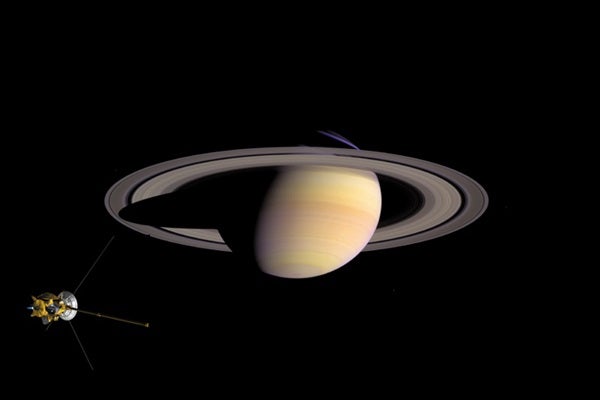That takes care of the volume. To determine a planet’s mass, astronomers follow the motions of a satellite, either natural or artificial, around the planet. According to Kepler’s third law of planetary motion, the sum of the masses of a planet and its satellite relates to the separation between the two bodies and the period of the satellite’s orbit around the planet. Thus, to apply this method, we need to find the satellite’s separation and orbital period — and this gives us the combined mass of the moon and the planet, not the planet’s mass alone.
A better way: Send a space probe, such as Cassini, and measure its distance from the planet and its orbital period as it circles around. Because Cassini’s mass is negligible compared to Saturn’s, the mass of the planet by itself can be calculated directly using Kepler’s third law.
Technically, Kepler’s third law assumes the orbits are circular. However, the mathematical relation one uses for elliptical orbits is a bit more complicated. — RICHARD CROWE, UNIVERSITY OF HAWAII, HILO










